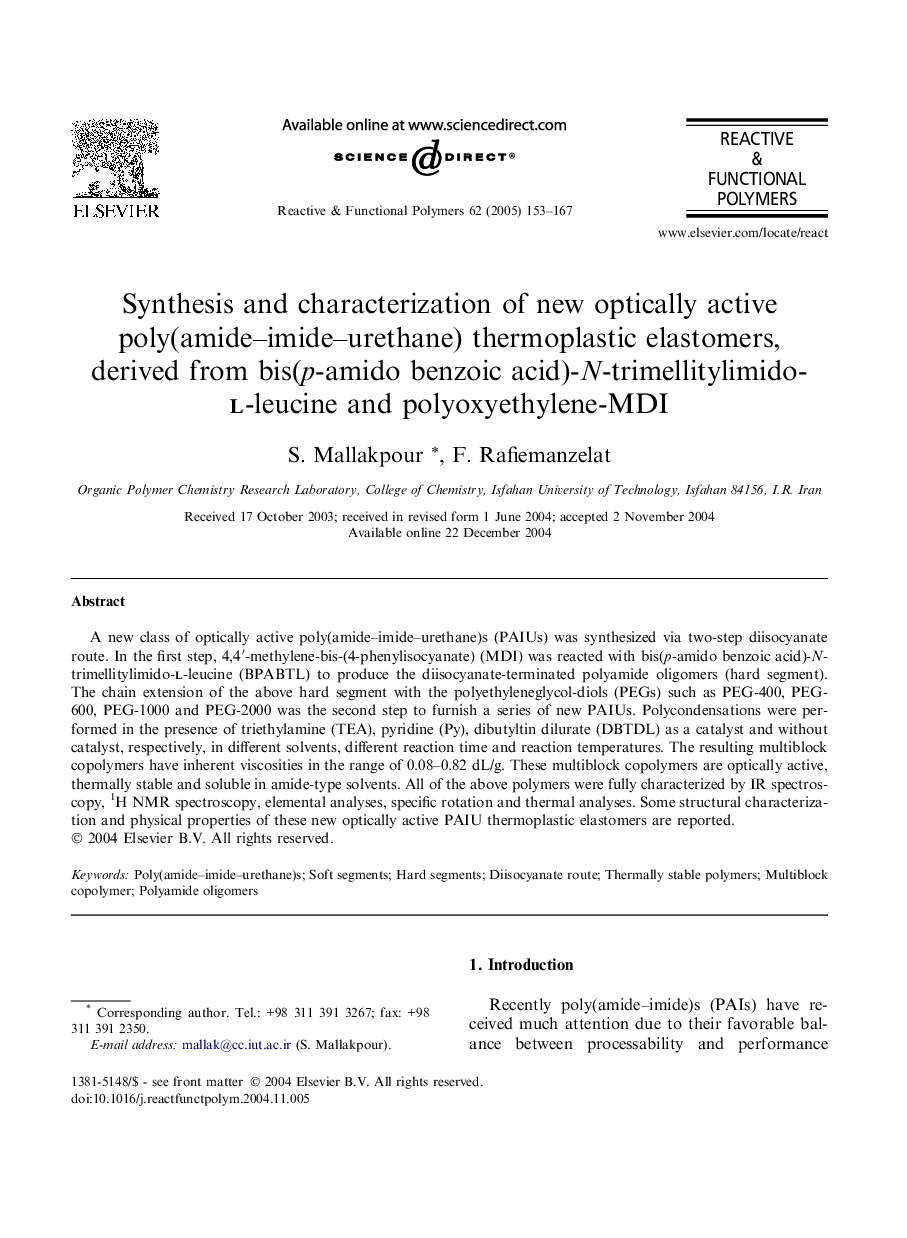| Article ID | Journal | Published Year | Pages | File Type |
|---|---|---|---|---|
| 9562590 | Reactive and Functional Polymers | 2005 | 15 Pages |
Abstract
A new class of optically active poly(amide-imide-urethane)s (PAIUs) was synthesized via two-step diisocyanate route. In the first step, 4,4â²-methylene-bis-(4-phenylisocyanate) (MDI) was reacted with bis(p-amido benzoic acid)-N-trimellitylimido-l-leucine (BPABTL) to produce the diisocyanate-terminated polyamide oligomers (hard segment). The chain extension of the above hard segment with the polyethyleneglycol-diols (PEGs) such as PEG-400, PEG-600, PEG-1000 and PEG-2000 was the second step to furnish a series of new PAIUs. Polycondensations were performed in the presence of triethylamine (TEA), pyridine (Py), dibutyltin dilurate (DBTDL) as a catalyst and without catalyst, respectively, in different solvents, different reaction time and reaction temperatures. The resulting multiblock copolymers have inherent viscosities in the range of 0.08-0.82 dL/g. These multiblock copolymers are optically active, thermally stable and soluble in amide-type solvents. All of the above polymers were fully characterized by IR spectroscopy, 1H NMR spectroscopy, elemental analyses, specific rotation and thermal analyses. Some structural characterization and physical properties of these new optically active PAIU thermoplastic elastomers are reported.
Related Topics
Physical Sciences and Engineering
Chemistry
Organic Chemistry
Authors
S. Mallakpour, F. Rafiemanzelat,
